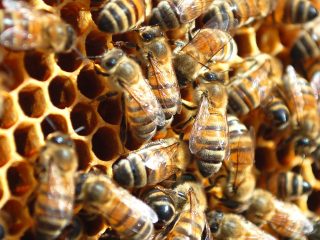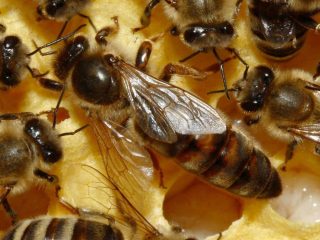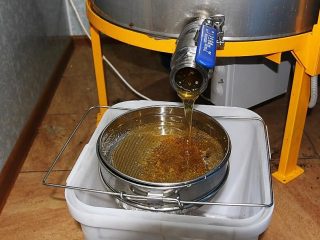Content
All beekeepers know how important it is to prepare bees for winter. This is due to the fact that the process of winter preparation is the main and most crucial moment in any apiary. In the autumn period, the concentration of carbon dioxide begins to increase significantly, the bees begin to age, and as a result of low temperature conditions, these processes are aggravated. That is why it is recommended to organize wintering for bees in such a way as to minimize the number of deaths. In addition, insects during the winter period retain health and energy for the spring flight.
How bees prepare for winter
As a rule, the swarming process comes to an end in August. It is during this period of time that drones become a burden for the bee colony, while they consume honey, which is much more appreciated at this time. Since insects begin the process of preparing for wintering, they do their best to save honey, as a result of which the drones are expelled from the hive. Undoubtedly, this could have been done much earlier, but, as practice shows, during the period of increased honey collection there is no time for this.
Bees are in many ways similar to people and on the eve of severe cold weather try to insulate their homes as best as possible. Insects try not only to protect their hive from the cold, but also from the penetration of other insects that want to steal food supplies.
In the autumn period, insects with the help of propolis close up all existing cracks, reduce the entrances. At such moments, the entrance to the hive is guarded even at night, as the bees are afraid of stealing honey from the outside. Bees become very aggressive, as a result of which they can attack even a puppy running nearby.
A set of measures to prepare bee colonies for wintering
If you make a mistake in the process of preparing bee colonies for wintering, then you can observe a massive mortality. To eliminate this problem, it is recommended to adhere to some basic rules during the preparatory work:
- provide the required amount of feed stock. In order for the bee colony to survive the cold season without losses, not to undergo diseases and to start flying around with a sufficient amount of strength and energy, it is necessary to provide about 25-30 kg of honey and bee bread for each hive. In some cases, the use of sugar syrup is allowed;
- an integral process of preparing bee colonies for winter is meeting the deadlines for growing young insects. It is necessary to take measures as a result of which the queen of the hive will stop the egg-laying process by the end of August;
- exceptionally strong bee colonies must go into the winter, otherwise they may die. As a rule, in this case, many beekeepers prefer to unite a weaker family with a stronger one;
- before the onset of cold weather, the hives must be completely insulated, and a ventilation system must be organized. If you plan to leave insects outside, then the insulation layer should be at least 15 cm.
Observing these rules, you can not be afraid of death and disease.
How to prepare bees for winter
In order to properly prepare the bees for wintering, it is important to understand that all work must be carried out before the onset of frost. During a scheduled autumn audit, it is recommended to check how ready the hives are for the upcoming cold weather. In order to draw the correct conclusions and prepare everything correctly in the future, you need to pay attention to the following points:
- the age of the queen of the hive - the amount of brood depends on her;
- the amount of brood - this moment has a significant impact on the readiness of the bee colony for the upcoming wintering;
- quantity and quality of honey and bee bread stocks;
- the suitability of the honeycomb in the hive;
- the condition of insects, the number of individuals exposed to the disease.
Thus, in beekeeping, preparation for winter begins with an audit, as a result of which the beekeeper identifies all the weaknesses of the hives and draws up a plan for further work in the apiary in order to eliminate the existing shortcomings. Many experts advise to prepare bees for cold weather as soon as the last flow was completed. During the execution of work, it is recommended to be as careful as possible, so as not to disrupt the life cycle of insects.
Which bees go to winter
Beekeepers begin to prepare bees for winter from the beginning of August. In this period of time, not only the hives are carefully examined, but also the bee colonies themselves. During such examinations, weak and infected families are identified. If insects are susceptible to disease, immediate treatment measures must be taken, otherwise the bees will not survive the winter.
Strong families with the young queen of the hive should leave in winter. It often happens that there are weak colonies in the apiary, in such cases they must be combined with other insects to allow the bees to survive.
How to prepare bees for wintering in August
As practice shows, beekeepers begin to prepare bees for winter in August. During this period of time, it is necessary to monitor which plants the insects collect pollen from for further processing. This is due to the fact that there is a possibility that insects will bring heather or honeydew honey into the hive. If such products have been found, then they must be immediately removed from the hive.
If bees eat honeydew honey during the winter period, they will have diarrhea, which leads to mass death. Heather honey hardens rather quickly and becomes unusable.
In the same period of time, it is recommended to examine bee colonies to identify weak and sick insects.
How to prepare bees for wintering in September
Preparation of bees for winter continues in September as well. It is necessary to perform the following work in the apiary:
- check the amount of feed stocks, replenish them if necessary;
- pre-study the types of houses and further location to create a comfortable wintering;
- treat the hive if necessary;
- check the status of the queen of the hive.
After all the work in the apiary is completed, you can send insects for the winter.
How to cook bees in winter for a warm skid
In the spring, when all the honeycomb frames in the nest were filled with honey, the honey collection came to an end, it is recommended to change the drift to a warm one at the end of summer. As a rule, these works are carried out at the beginning of August, as a result of which the insects have enough time to prepare the nest and food supplies, according to their needs.
During transfer, it is recommended to make several holes in each honeycomb frame. This is necessary so that insects have the opportunity to move along the hive to the rear walls in the winter period. During the formation of the nest, it is recommended to place the honeycomb frames with feed stocks at an angle.The honeycomb frames, in which the most honey is located, are usually placed closest to the back walls, closer to the center are the frames, which are half filled or less.
Preparing the apiary for winter
Undoubtedly, the preparation of bee colonies for winter is an important point, but do not forget about the preparation of the apiary, namely the hives. As a rule, nests must be formed before the onset of cold weather. In this case, it is worth choosing a moment when the insects begin to clump together.
The honeycomb frames and the degree of their filling with food deserve special attention. Since bees are at rest during the winter period, each step will be quite difficult for them, as a result of which they may die if there is no food in the immediate vicinity. As a rule, the honeycomb frames are completely filled and installed around the perimeter of the hive.
There are several ways to form nests:
- from 2 sides - a great option for strong families. 2 frames are installed in the center, each of which contains 2 kg of honey. Around these frames, honeycombs are also installed, which already have 4 kg of honey. There should be 30 kg of honey in total;
- angular method - on one edge they put a frame completely filled with honey, behind it they put other frames that are filled with a much smaller amount of food. In extreme limits, there should be at least 2.5 kg of honey;
- beard - in the center there is a honeycomb frame, completely filled with honey, from which descending frames are placed. In total, the hive should contain 15 kg of honey. This method is used mainly for young families.
To make the bees feel as comfortable as possible, it is necessary to install additional wooden blocks. These are some kind of landmarks located perpendicular to the honeycomb frames.
Conclusion
Preparing bees for winter is a crucial moment that should be given due attention. The preparation is carried out from the beginning of August and ends in September. The quality of the preparatory work fully affects the comfort of the wintering of insects.










